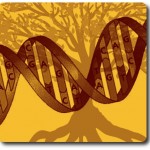Search results
“Finding Your Roots” Premiers Sunday
March 21, 2012 by ramona
Filed under Articles, Latest News

Mark your calendars for Sunday March 25 8pm EDT to watch the premier of “Finding Your Roots” with Henry Louis Gates, Jr.
Perhaps what makes “Finding Your Roots” one of the most interesting celebrity genealogy programs to date is the element of surprise as Gates escorts his guests through some shocking revelations in search of their ancestors.
Each episode features the genealogy of two or more celebrities. With the help of some leading American Genealogists, Family History experts and DNA samples. The show often links guests together in surprising ways using Autosomal DNA.
Scientists Joanna Mountain and Mike Macpherson of “23and Me” (genetics testing company) worked with “Finding Your Roots” to come up with some often-astonishing results. Proving relationships by degrees such as 3rd, 4th, 5th cousins (or more) is accomplished using the genetics company’s “Relative Finder” test.
This seasons 10 part series features a celebrity Line up of:
· Harry Connick Jr. and Branford Marsalis
· Cory Booker and John Lewis
· TV Personalities Barbera Walters and Geoffrey Canada
· Kevin Bacon and Kyra Sedgwick
· Angela Buchdahl, Rick Warren and Yasir Qadhi
· Samuel L. Jackson, Condoleezza Rice and Ruth Simmons
· Actors Maggie Gyllenhaal and Robert Downey, Jr.
· Sanjay Gupta, Margaret Cho and Martha Stewart
· John Legend, Wanda Sykes and Margarett Cooper
· Michelle Rodriguez, Adrian Grenier and Linda Chavez
Watch Preview on PBS. See more from Finding Your Roots.
Genetic Genealogy: What is it, how does it work and why should I be interested
October 20, 2011 by ramona
Filed under Articles, General Tips, Getting Started in Genealogy, Introduction to Genealogy

In 1997, a story hit the presses about an English Schoolteacher who was genetically linked to a 9,000-year-old skeleton known as Cheddar Man. Since then genealogy researchers, beginning genealogist and pretty much everyone interested in researching their family tree has become interested in genetic genealogy. However, it was not until 2008 that the genealogical community began to make great strides in using this research method. Today several genealogy groups and genetic researchers offer services that can map your DNA and set you on the path to digging up some very deep roots.
Before considering genetic genealogy as a research method, I think it is important to understand exactly what you can and cannot gain from it. In addition, it might be helpful to put some perspective on where it fits in your genealogical toolbox.
What it will do and what it won’t do
Genetic genealogy does have its limitations; it cannot reveal who your ancestors are. Thus, it is no shortcut to good solid investigation. What it will do is impart evidence about your deepest origins and trace the lines of geographic descent coded in your DNA. When record trails run dry, your genes can reveal the rest of your story. For instance, if your last known ancestor resided in Scotland, a DNA test could point to other global areas and provide some useful clues for continuing research.
Using your DNA as a research tool can also:
- Confirm or eliminate the possibility of descent from a particular family or person
- Connect you to other researchers using DNA for surname studies
- Substantiate or refute findings and conclusions in your family tree research.
This short video by Bennett Greenspan, gives a great short explanation on the subject.
How it works
Should you decide to pursue this method in the search for your roots you will be pleased to know that it has become a relatively simple thing to do. DNA test kits are available from a number of testing facilities and you can order kits by mail or online at a reasonable cost.
The testing kit typically consists of a swab, which is used to collect cells containing your DNA from the inside of your cheek. Once you have employed the swab, the next step is simply to send in your sample. Results are generally available within a few months.
Once the samples arrive at the lab, two types of testing may be used, one for Mitochondrial DNA or mtDNA and one for Y chromosomal DNA.
Mitochondrial DNA
Mitochondrial DNA is found within the cytoplasm of a cell and is passed along the maternal line to both male and female children. Male children however, do not pass it to their offspring. The mtDNA in your cells is a match to your mothers as well as your grandmothers. This type of DNA is better for testing whether or not a genetic relationship exists because it changes at a very slow rate. An mtDNA test will reveal if there is a common maternal ancestor in a genetic line. It will not determine how close that relationship is, so your match could be within a few generations or span hundreds of years.
Y chromosome tests
Y chromosome tests, Y Line or Y DNA tests are tests for men only, as women do not possess a Y chromosome. The Y chromosome passed from father to son, holds chemical markers with a distinctive pattern. This pattern called a Haplotype, clearly differentiates one male genetic line from another; shared patterns in the markers signify relatedness. In spite of this, they cannot distinguish the extent of the relationship. Y chromosome testing is most useful to determine if males with a common last name are the product of a shared ancestor.
Haplogroups
A haplogroup can be determined from markers on both the mtDNA and Y chromosome affording you the information on early ancestry for both the maternal and paternal lines.
Interested in further information? Join the discussion on the forums at “Stumped”.
